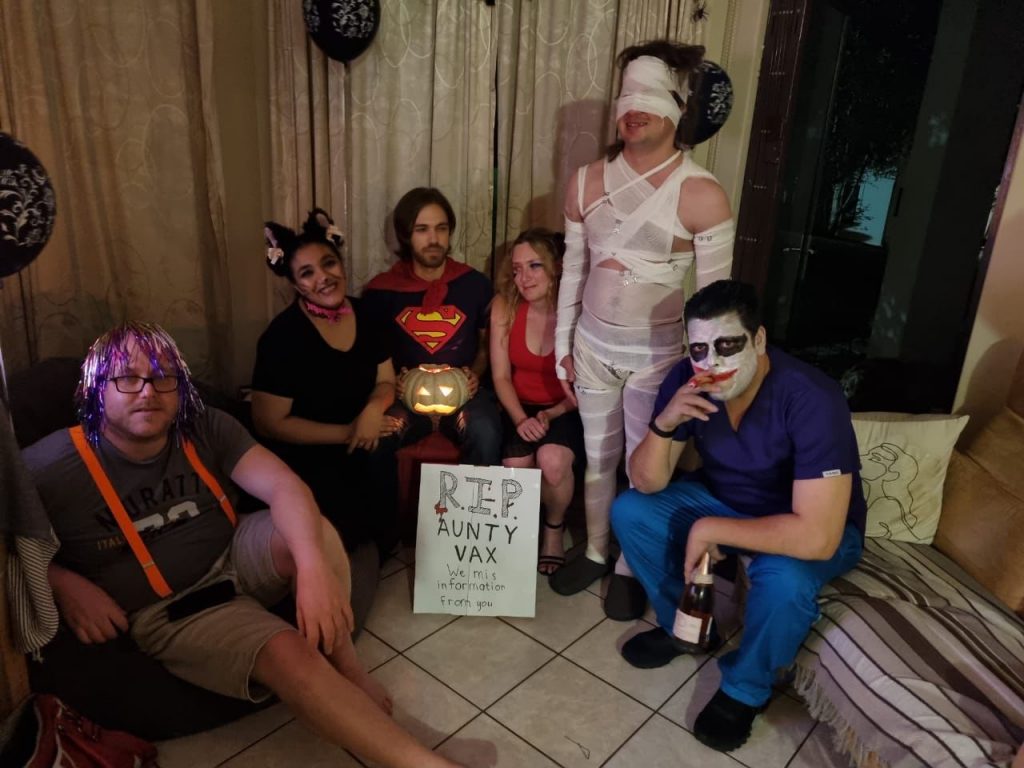
This week’s topic is one with a lot of discussion points, so I am breaking it into two parts. I’ve been avoiding writing this article for a while now, precisely because it is such a complicated one, and because it’s a topic I’ve so often discussed over the years. It needs to be discussed on any platform addressing disability though, so I’m giving it a bash.
What do I mean by disabled demons and angels? Put simply, society’s tendency to frame people with disabilities as either subhuman (demons) or superhuman (angels). We’re going to address the demonisation of disabled people this week, and address angels in the next post. Let’s jump in.
Disability is often framed in a very negative light. Unfortunately, the stigma associated with disabilities leads to actual disabled individuals also being considered to be subhuman, or “less than”. In South Africa and elsewhere, there are cultures in which people with disabilities are seen as inherently bad, which is supposed to explain why they were “punished” with a disability. Some people consider disabled bodies to be hideous, unnatural, or objects of shame or pity.
This has long been a problem in film and television depicting disabled characters. There is a strong link between disability and villainous characters. Darth Vader, Voldemort, Freddy Kruger and Dr Poison are all examples of villains with scarred or otherwise disfigured faces, which perpetuates the notion that beautiful equals good and pure, and marked or ugly in the traditional sense equals bad and deeply flawed.
Disability is also used in this sense to make villains seem more intimidating and sinister, such as in the case of Captain Hook, who lost his hand to a crocodile and attached a hook to his arm in its place. Mental illness, of course, is also very commonly used to make a character seem more unpredictable and scary, such as the Joker in Batman. Other examples of disabled villains include Alistaire Smythe in Spider Man (he is paralysed from the waist down) and Destiny from the X-Men (who is blind) although admittedly there is also a disabled hero in the X-Men. I am not arguing that villains should never be portrayed as disabled, but it is worth taking a close look at the reasoning behind why the villain is given a disability in the first place. Is it just a trait, or is it signifying something about how scary or flawed the villain is?
Other commonly held beliefs regarding disability that subhumanise disabled people include that their families have been punished, or that a generational curse has been put on the genetically disabled person’s family. In addition, there is a tendency amongst some religious groups to see people with disabilities as just not having enough faith, because if they did, they would have been healed. The extreme form of all of this is the perception that disabled people are creatures of the devil.
Sometimes, the subhumanisation of disabled people is not related to evil, but linked to them being subhuman in that their lives are just considered worse, and worth less than the lives of nondisabled people. In these cases, disabled people are often seen as objects of pity and/or as charity cases.
People have often expressed to me that they are so very sorry that I am blind, in which case I respond that I am not. Acquaintances of mine have often had money shoved into their hands, because people either assumed they were beggars, or felt so sorry for them that they just had to give them something to make their miserable existences a little brighter.
Of course, another example of when disabled people are considered to be worth less is, as I’ve mentioned in previous articles, in the situation when individuals tell my partners that they are such good people for dating me. It’s essentially expressing the idea that I must be a burden on the nondisabled partner, and that they could have a much more fulfilling relationship should they have decided to date a nondisabled woman.
Lastly, another way in which disabled people are treated as subhuman is through being infantilised. Often, the disabled are perceived as not having the ability to make decisions for themselves, and things are decided on their behalf. This, unfortunately, has been perpetuated by institutions and organisations that exist for the purposes of “helping” the disabled.
I can’t tell you how many times people have asked the nondisabled person accompanying me what I would like to eat or drink, instead of asking me directly. People often also use a singsong voice when talking to me, as one would use when talking to a small child, or use the diminutive forms of words. The latter is most often the case in Afrikaans, in which someone might say “hier is jou kossies… Jy kan sommer met jou handjies eet” meaning “here is your food… you can just eat with your hands,” but food (kos) and “hands “hande” are in the diminutive forms. And no, I don’t only ever eat with my hands. I generally eat with a knife and fork, unless it’s pizza or burgers etc.
In conclusion, I obviously do not believe that disabled people are subhuman in any way. We develop into adults who have agency, we don’t need anybody’s pity, and we are valuable. And if demons turn out to be real, and all they are is just a bunch of disabled people using wheelchairs instead of burning chariots, I’m sure many a horror movie enthusiast will be very sadly disappointed in the makeup of the legions of hell.